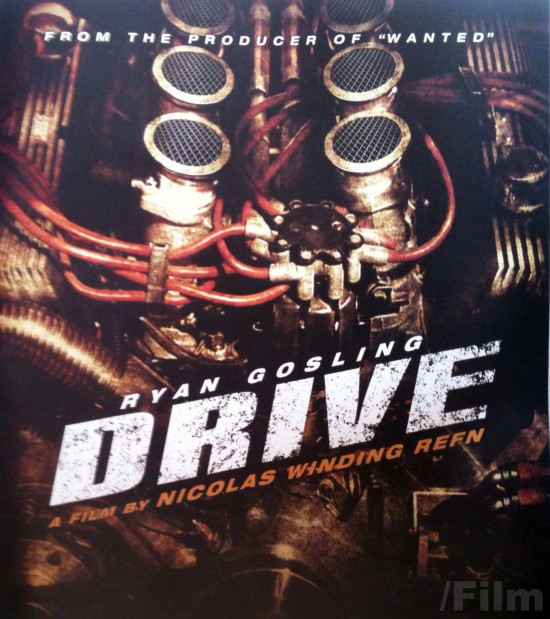Imagine driving the Pacific Coast Highway on a warm, quiet afternoon as the setting sun peers through a filter of moody clouds, windows down, listening to the dull roar of the wind, the waves, and Tears for Fears on the radio. Now throw in several agitated mobsters, a barrage of gunfire, and no speed limit.
”Drive” wins award in Cannes
“Drive,” which earned director Nicolas Winding Refn the Best Director Award at the 2011 Cannes Film Festival, feels a lot like that. It is the paradoxical, puzzling union of an acutely slow, peaceful calm and a desperate, severe violence that somehow move side-by-side through the entire film. This off-putting combo will leave you undecided, long past the conclusion, on whether the movie is surprisingly short or dreadfully long, oddly relaxing or dangerously thrilling. You are left in limbo, somewhere between content and confused, debating whether to nap on the beach or punch a hole in the wall.
“Drive” opens to a subdued phone conversation between a young, rugged, stunt-driving auto mechanic, played by Ryan Gosling, and a client of his third line of work: moonlighting as a getaway driver with an uncanny knowledge of Los Angeles’ “100,000 streets.” The Driver, the only title given to Gosling’s character in the film, delivers his simple ultimatum: “I give you five minutes … I don’t sit in. I don’t carry a gun. I drive.”
And boy, can he drive.
“Put this kid behind a wheel and there’s nothing he can’t do,” argued Shannon, played by Bryan Cranston, his old friend and boss.
Sporting a scorpion-emblazoned racing jacket, a pair of leather driving gloves, classic aviators, a toothpick, and the old-fashioned wristwatch he uses to clock his clients, Gosling’s character is a cool, quiet, enigmatic hero somewhere between Robert De Niro’s “Taxi Driver” and Tom Cruise’s “Top Gun.”
Gosling steps up to play complex role
Though “Drive” is set in modern-day LA, watching the Driver stare down a police cruiser or silently lock eyes with the girl next door is watching the coolest thing to come out of the ’80s since MTV. Despite delivering only a couple lines in the first half hour, and not many more over the remainder of the film, Gosling takes complete control of the film with an unwavering gaze, and holds it until the credits roll. Previously recognizable almost exclusively for his lead role in “The Notebook,” and more recently as a suave ladies’ man in “Crazy, Stupid, Love,” Gosling displays an intensely subtle, reserved excellence punctuated unpredictably by bursts of severe, protective anger.
This protective side begins to emerge as the Driver bonds with his attractive neighbor Irene played by Carey Mulligan, and her son Benicio, whose father, Standard played by Oscar Isaac — technically still Irene’s husband — finishes a prison sentence for an unexplained crime. As the Driver grows to care for both mother and son, the temporarily “widowed” young woman begins to fall for him in return. In no time, however, Standard is released and reenters the picture, bringing with him a slew of complications and dangers. From here the Driver’s world begins to spin out of control, careening wildly towards an unforeseeable finish line.
A must see movie for the year
“Drive” is far from the typical, box-office-busting action flick dominating theaters these days. Rather than relying on special effects, explosions, sex or unceasing violence, this film thrives on the dichotomy of quietness with destruction, stillness with lightning-fast motion, love with rage. Like a great speech, the perfectly planned pauses play a crucial role in creating a one-of-a-kind experience. The style and creativity in the camera work, especially the use of emotive lighting and unique framing, infused visually and even musically with hints of the ’80s — check out the title typography to get an idea — forge a piece of art reminiscent of “Pulp Fiction.” And though, like the ‘94 Tarantino film, brutal, graphic violence does make a powerful appearance, Refn tempers, disperses, and balances the bloodshed with grace.
Without doubt, “Drive” is one of the most unique, cinematically sexy, hard-hitting film experiences to be had this year or even this decade. Whether it’s for the superbly understated work of the studly Gosling, the cosmic, vintage score, the one-two punch of silence and violence, or even just the covetous collection of vehicles, get in the car and get to the theaters — keeping under the speed limit at all times, of course. Just be warned: when you come out ready to take hairpin turns at 120 miles per hour, it might be wise to designate a driver.







